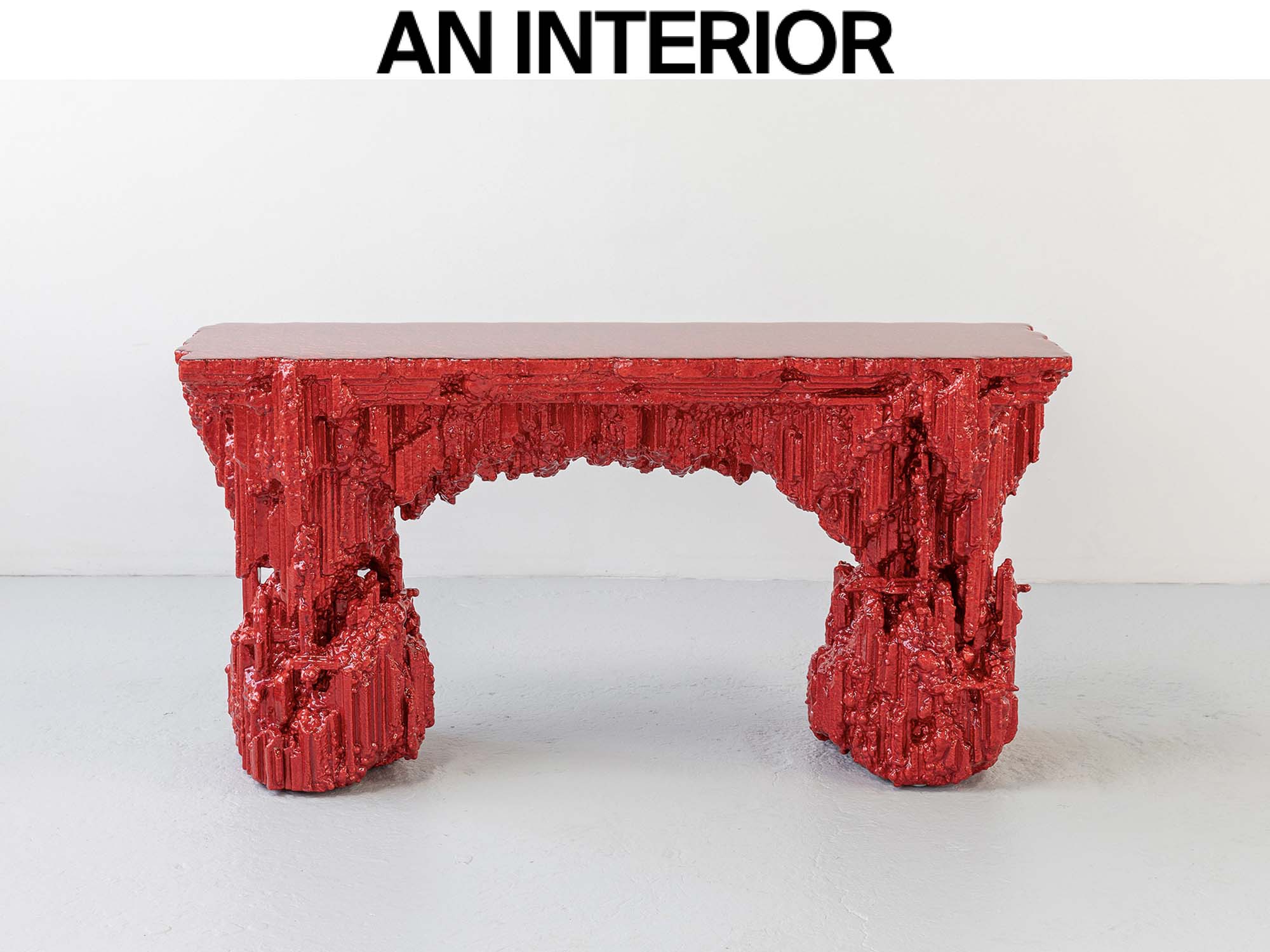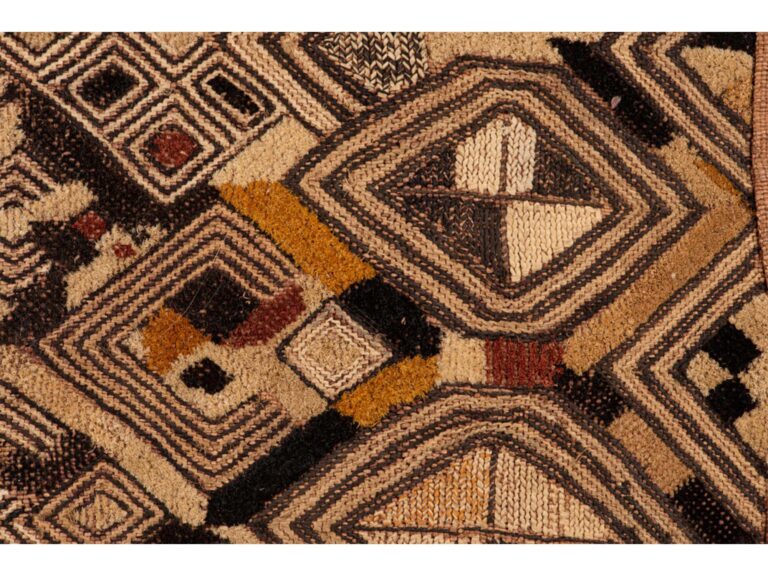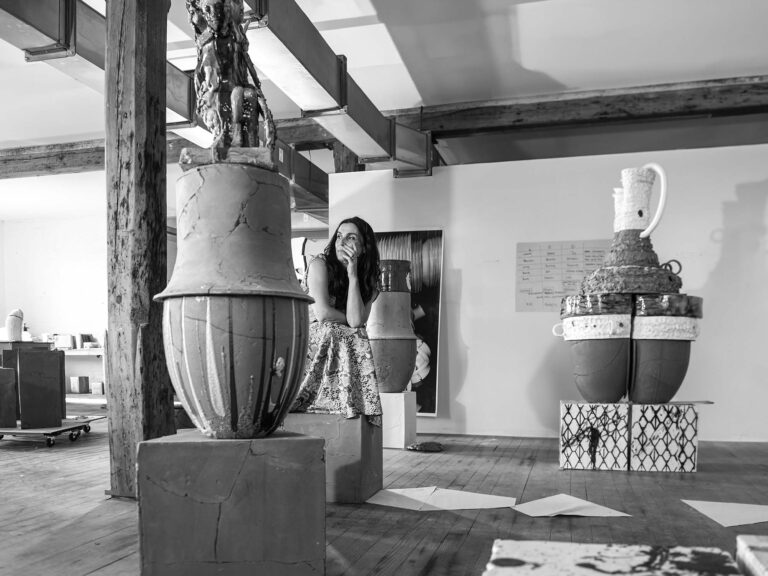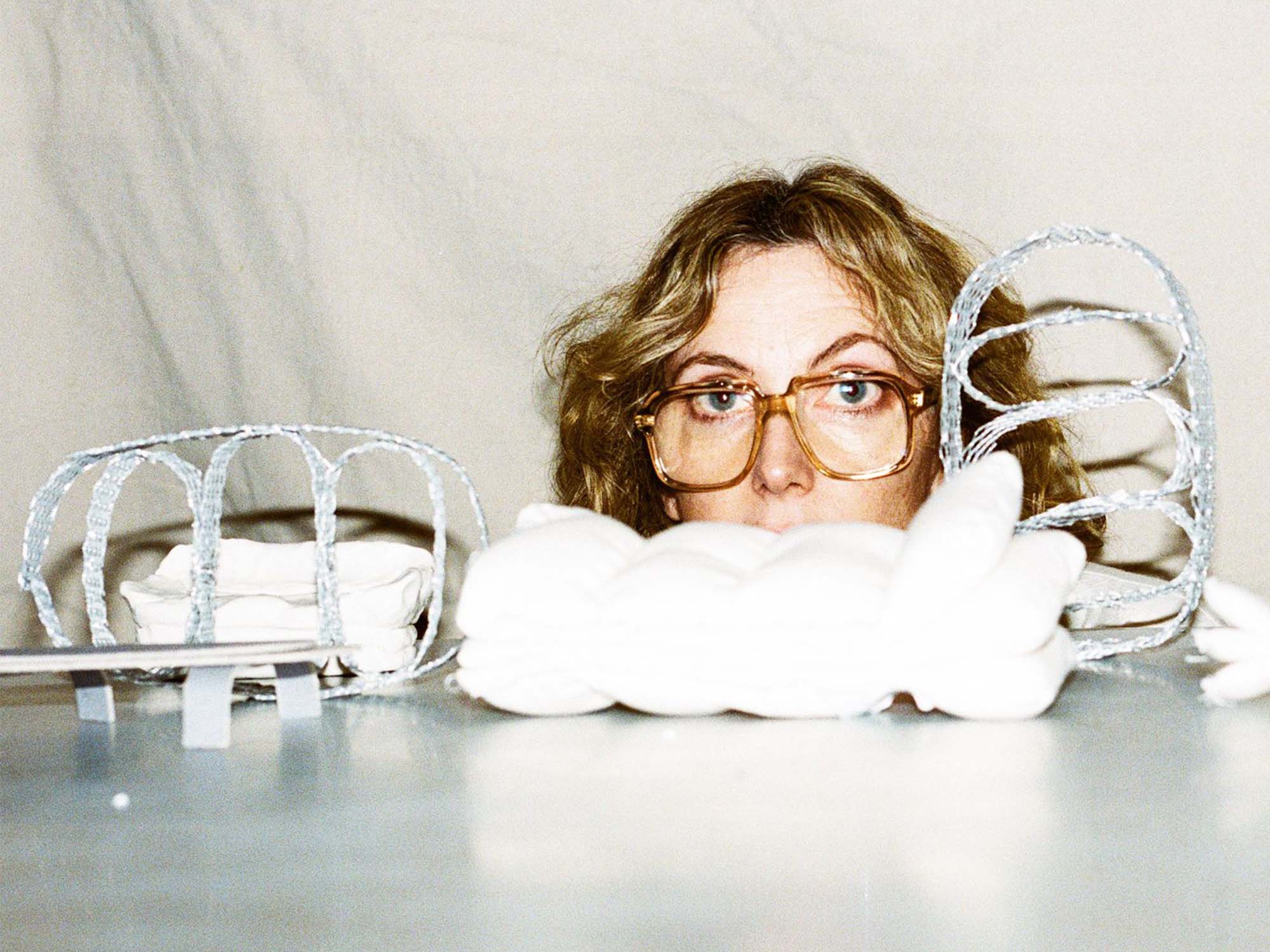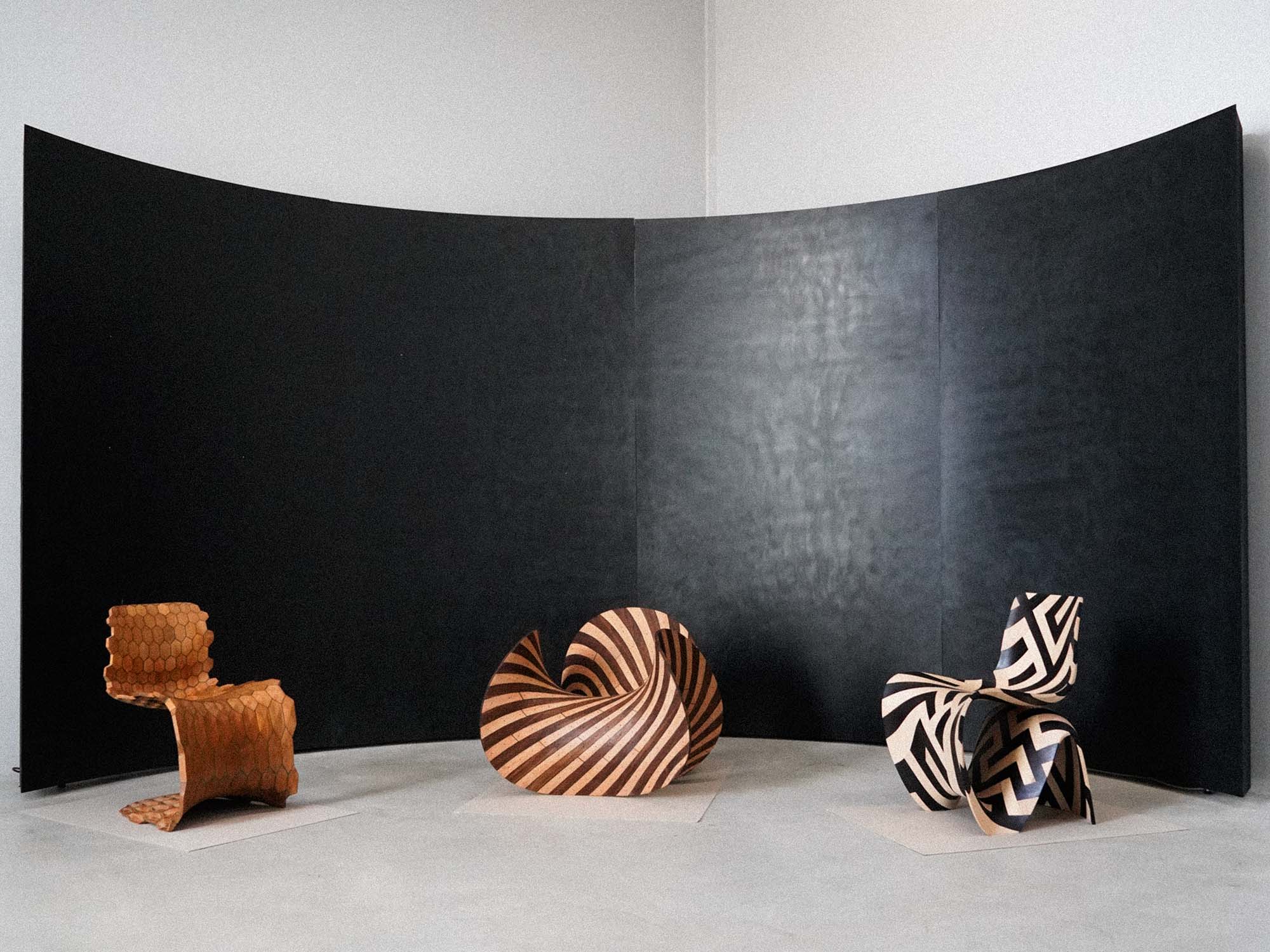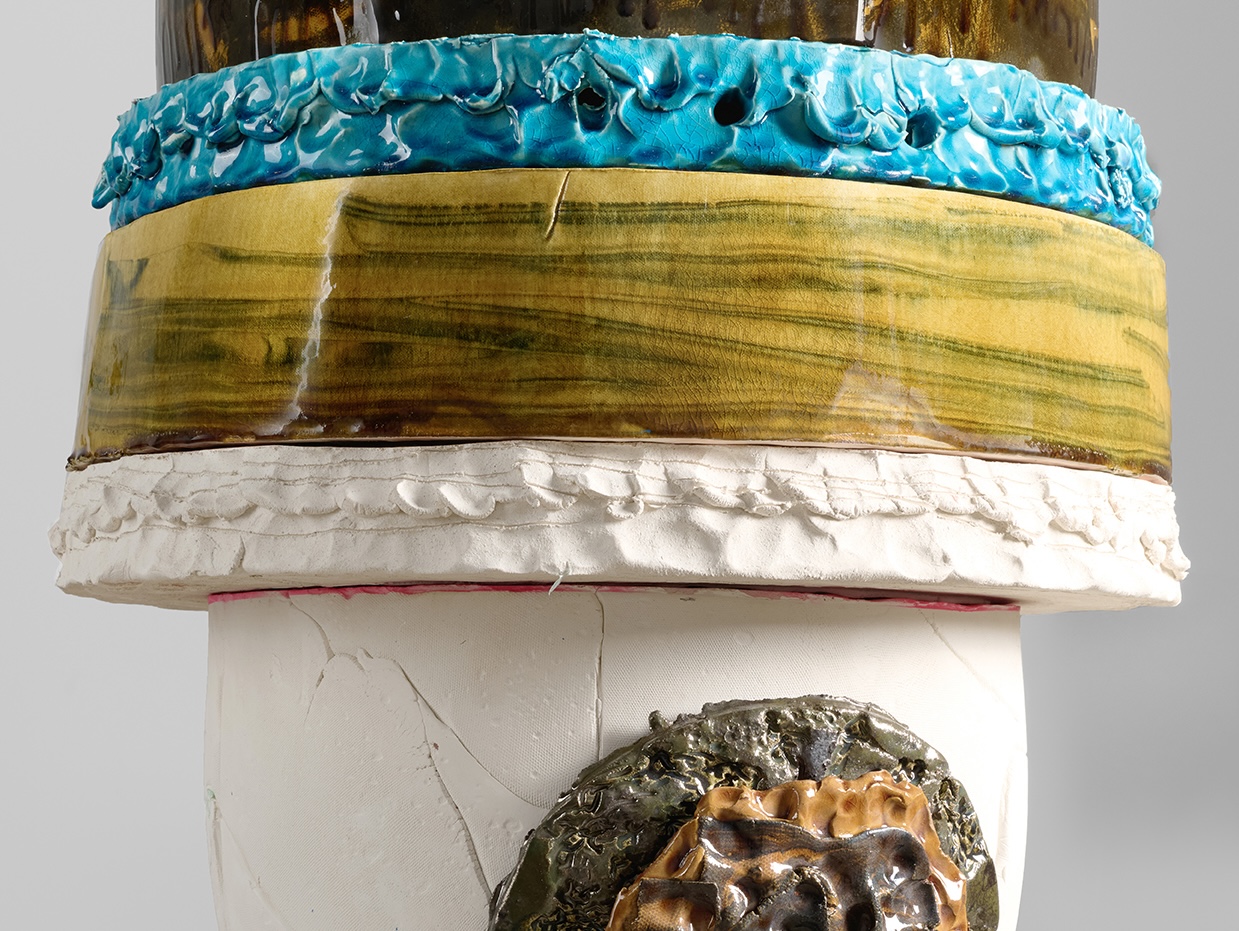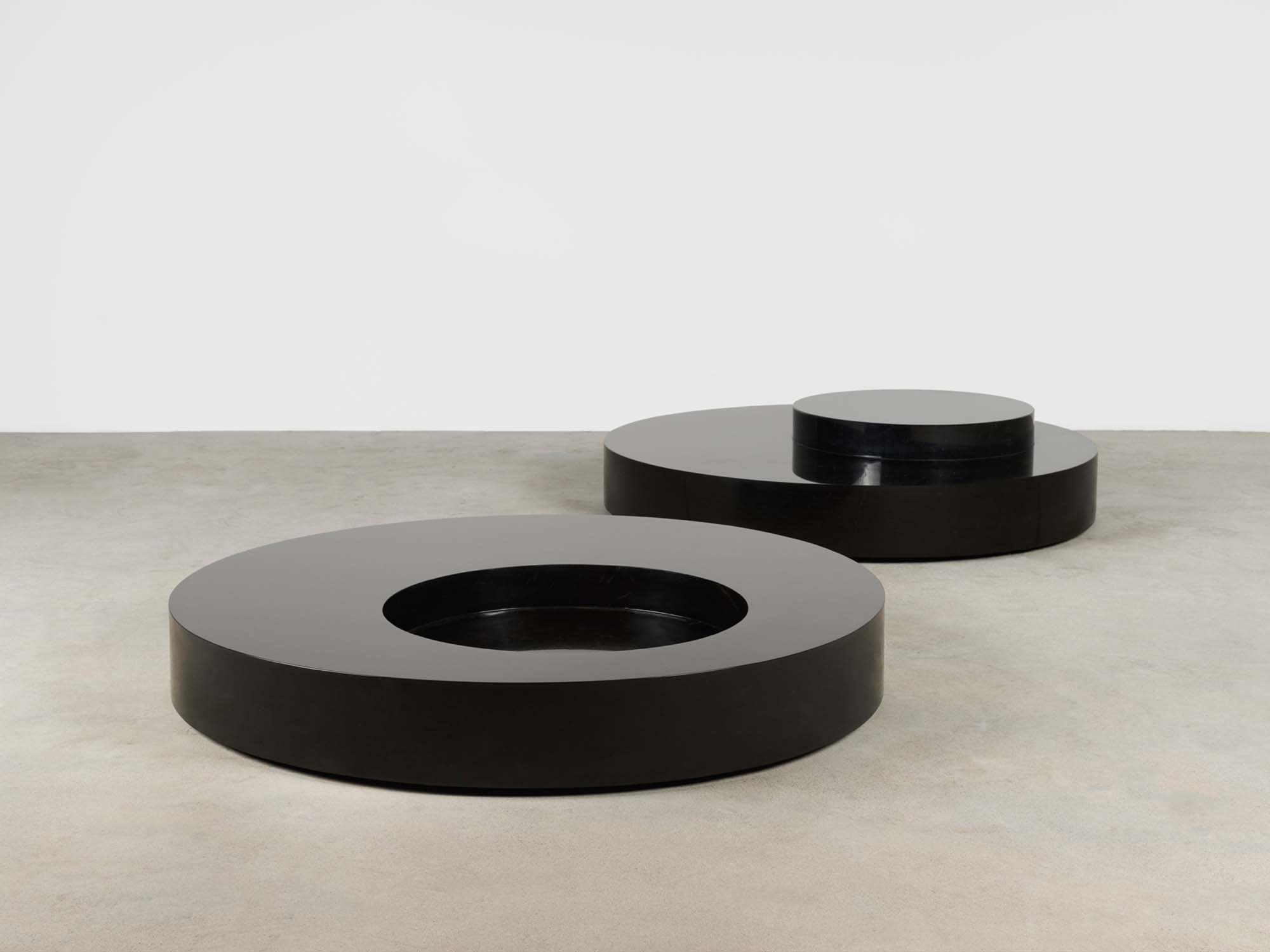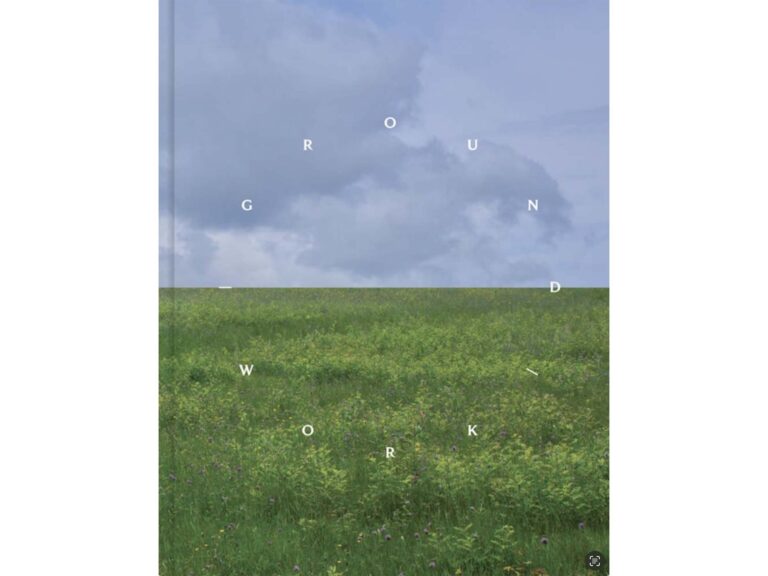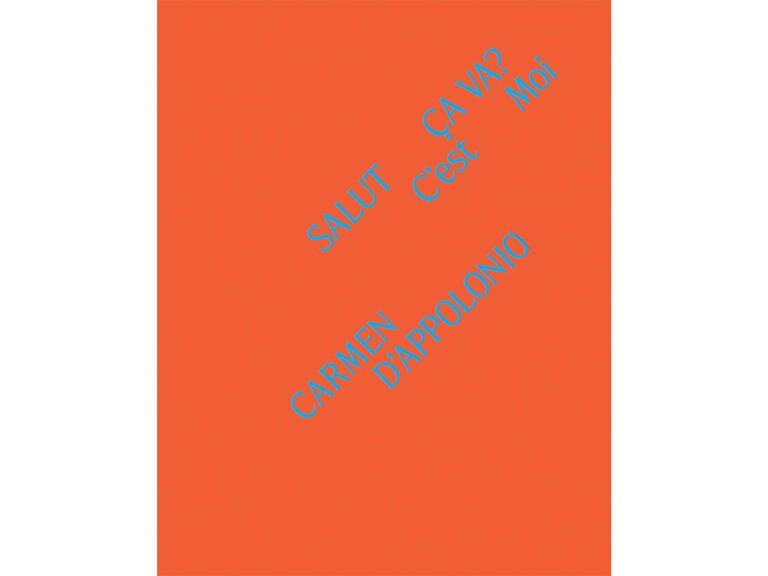By Jesse Dorris
When the artist and furniture maker Chris Schanck was a kid, he used to sit around the kitchen table with his sister and mother, making god’s eyes of yarn and sticks collected in the backyard. “The objects held spiritual power,” Schanck told AN Interior, “and the act of crafting together made us more familiar.”
Schanck, who lives in Detroit, still makes objects from the detritus he finds lying around, but he’s expanded his palette. In his latest works, now on display at New York’s Museum of Arts and Design, evocative bits of refuse are augmented with particleboard, pink foam, and balls of tinfoil. With the aid of craftspeople from his neighborhood, Schanck congeals this sundry assortment into uncanny pieces of furniture painted in shocking pops of color. The exhibition title, Off-World, alludes to the mid-century panic about extraterrestrials; it’s an apt descriptor for these strange configurations of wonder, grief, and sweet unease.
Mortal Bench (2021) tops a borne settee with two eerie figures that nestle a glowing orb. A series of mirrors reveal disconcerting portraits, variously framed by bulbous creatures from beyond, bristly scraps of chicken wire, or funeral drapery. The cast-aluminum frame of Sorcerous (artist’s proof dining chair) (2021) has a kind of architectonic rigor belied by its upholstery, a hand-printed and heat-embossed velvet with a cactus pattern. To the sitter it warns: Don’t get too comfortable.
Several pieces show off Schanck’s innovative “alufoil” process of wrapping packing foam in foil and then coating the whole in resin. But it’s used to best effect in Cryo II (2020–1), a craggy mint-green cylinder concealing shelves. It’s unique in the history of furniture design, Cranbrook Art Museum director Andrew Blauvelt told AN Interior. He first saw Schanck’s work a decade or so ago, when the artist was finishing up his studies at the Cranbrook Academy of Art. The foil, he said, “is a surface treatment, which means the forms of the furniture below the skin, so to speak, are sculptural.”
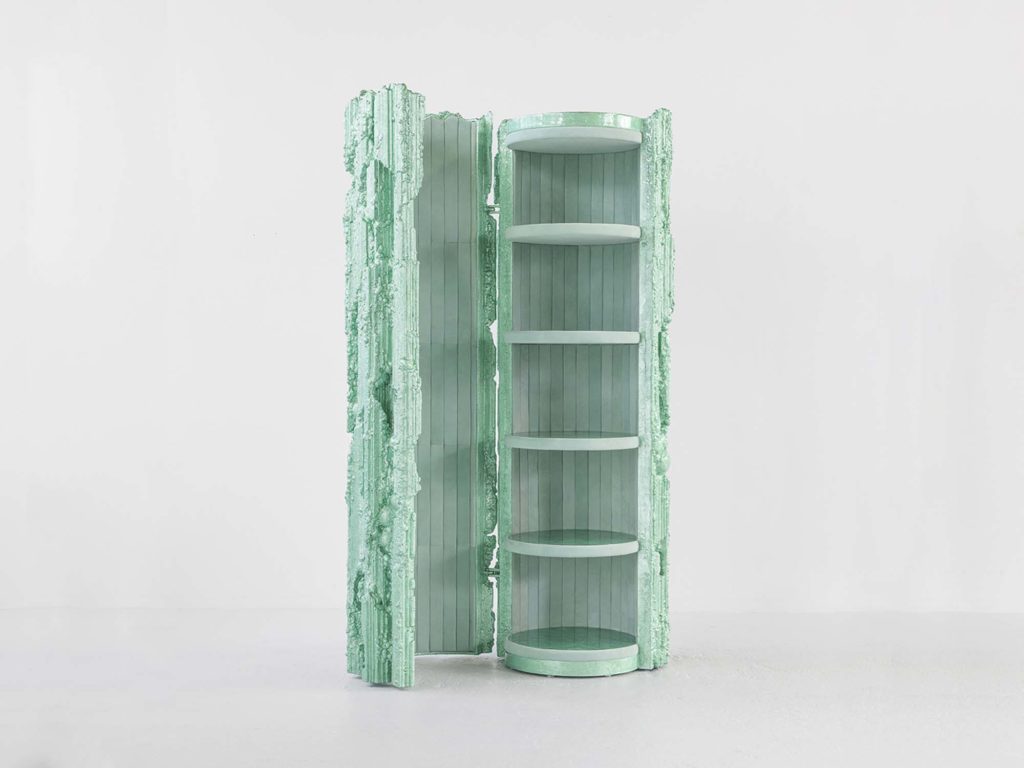
These subdermal interventions lend a weight to works like Shuddering Cabinet (2022), which sets swells of alufoil in and around resin-covered chunks of OSB, the once-plentiful plywood used to board up the abandoned homes in Schanck’s neighborhood. (Those same homes have since been snatched up by investors.) The composition brings to mind the material play of Ettore Sottsass and Charles Long, but with undertones of instability and dread.
Joy can be found here, if you look for it. At first glance, the pastel aquatic figuration of Mum’s Chandelier (2020) looks more Cthulhic than Chihuly, but in fact it’s a return to Schanck’s roots. The piece is a collaboration with his mother, who covered the steel armature with objects that recalled her own home of Florida. It’s sentimental but not mawkish, an ode to those early days of kitchen-table creation. “Looking back now,” Schanck said, “I see art and craft as a way to manifest meaning into form—if you believe it can.”
